Gma's & Gpa's Great Adventures
We have a few days to work our way back to Picton to take the ferry back across to North Island on the 25th. We have no specific plans – will take it a day at a time and just see what we see along the way. Heading north along the west coast our 1st stop is at Hokitika Kiwi Sanctuary & Giant Eels. The Kiwi is NZ’s national bird – a flightless bird with soft, hair-like feathers and no tail. They eat insects, grubs, worms, seeds and berries with their long, pointed beak. They sleep in burrows during the day, coming out at night.
There were many interesting and educational exhibits of many different fish and reptiles, including a huge display with many giant eels. Giant longfin eels have lived in NZ for 80 million years. They are the largest freshwater eel in the world and are found in rivers, lakes and streams throughout NZ. They are good climbers - can even climb up waterfalls.
These eels only breed once, at the end of their life. Males mature around 24 years old, females anywhere between 36 and 100 years or more. Once mature, the eels leave their freshwater homes in NZ and migrate almost 4000 miles north through the Pacific Ocean to Tonga. Can you imagine swimming that far!? The females can produce up to 30 million eggs which are then fertilized by the male. Once spawning is complete the eels die. The tiny 1mm transparent, flat, leaf-shaped larvae reach New Zealand by drifting on ocean currents, sometimes taking up to 17 months to arrive. As they near NZ they change into a tiny “glass” eels. After they enter fresh water they turn darker and at about 4 inches become “elvers” and move upstream to find a suitable place to live and slowly grow into adults. Amazing how these simple creatures know how to do all this life-sustaining traveling.
RUTH METZ
43 chapters
Now Where??
West Shore, South Island, NZ
We have a few days to work our way back to Picton to take the ferry back across to North Island on the 25th. We have no specific plans – will take it a day at a time and just see what we see along the way. Heading north along the west coast our 1st stop is at Hokitika Kiwi Sanctuary & Giant Eels. The Kiwi is NZ’s national bird – a flightless bird with soft, hair-like feathers and no tail. They eat insects, grubs, worms, seeds and berries with their long, pointed beak. They sleep in burrows during the day, coming out at night.
There were many interesting and educational exhibits of many different fish and reptiles, including a huge display with many giant eels. Giant longfin eels have lived in NZ for 80 million years. They are the largest freshwater eel in the world and are found in rivers, lakes and streams throughout NZ. They are good climbers - can even climb up waterfalls.
These eels only breed once, at the end of their life. Males mature around 24 years old, females anywhere between 36 and 100 years or more. Once mature, the eels leave their freshwater homes in NZ and migrate almost 4000 miles north through the Pacific Ocean to Tonga. Can you imagine swimming that far!? The females can produce up to 30 million eggs which are then fertilized by the male. Once spawning is complete the eels die. The tiny 1mm transparent, flat, leaf-shaped larvae reach New Zealand by drifting on ocean currents, sometimes taking up to 17 months to arrive. As they near NZ they change into a tiny “glass” eels. After they enter fresh water they turn darker and at about 4 inches become “elvers” and move upstream to find a suitable place to live and slowly grow into adults. Amazing how these simple creatures know how to do all this life-sustaining traveling.
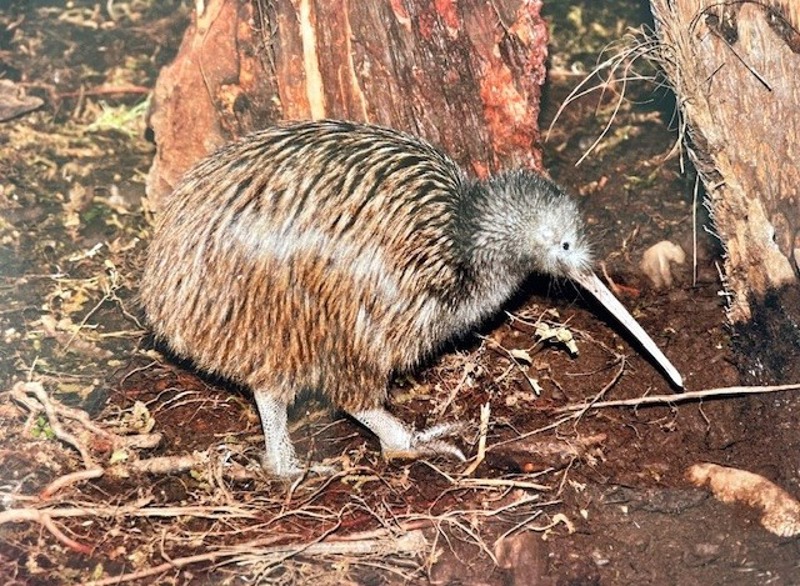
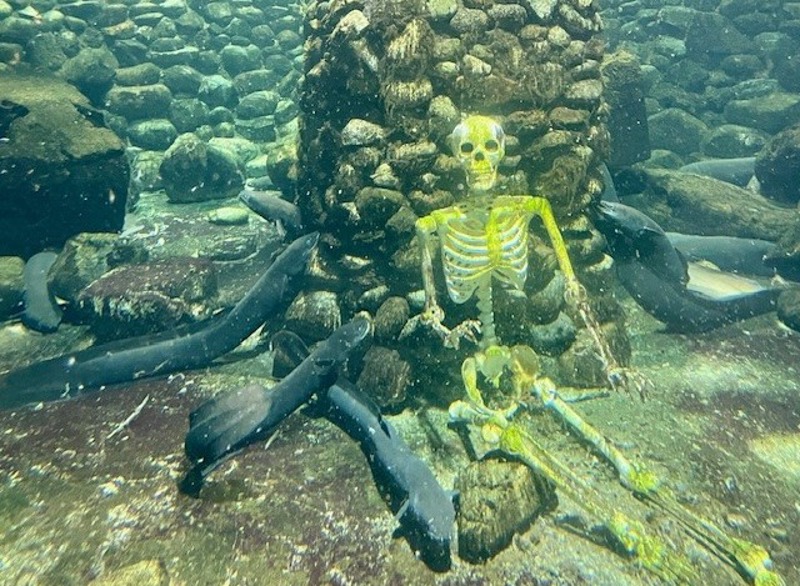

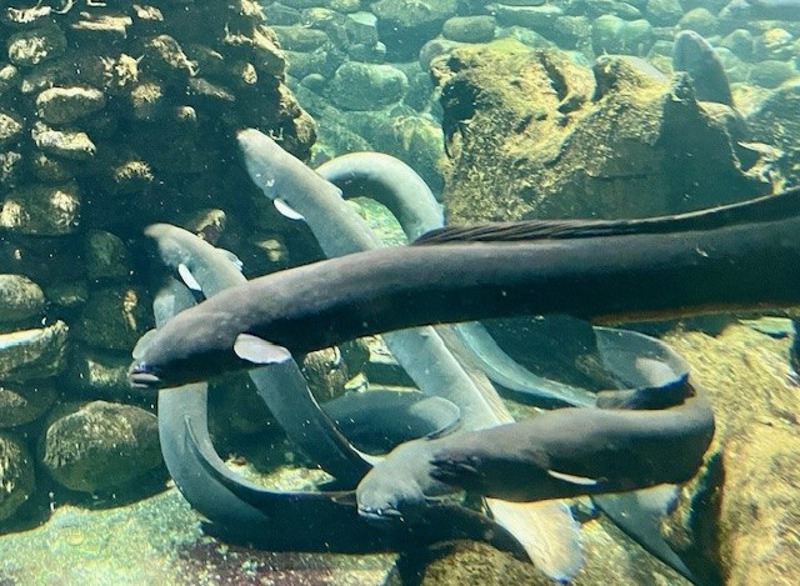

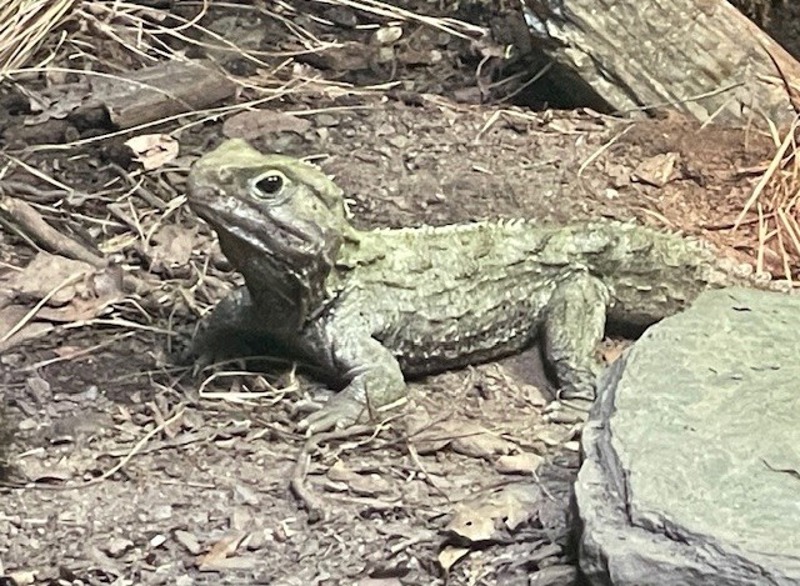
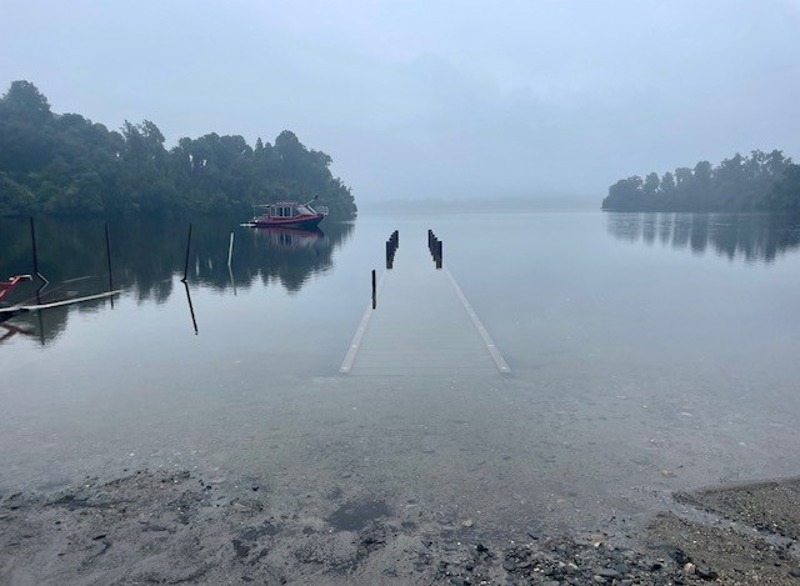

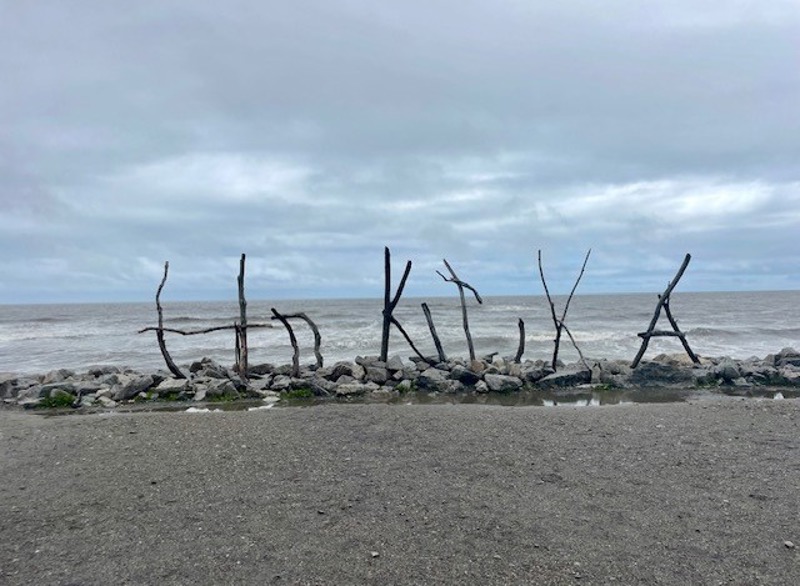
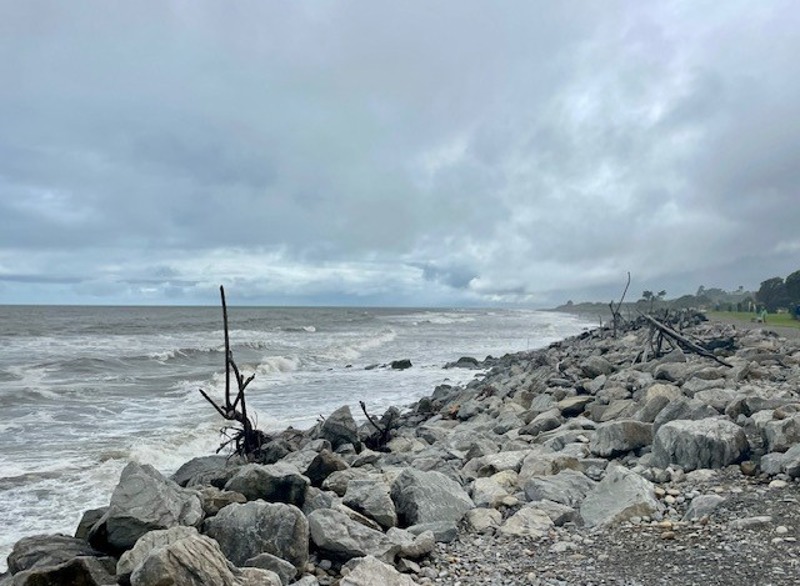
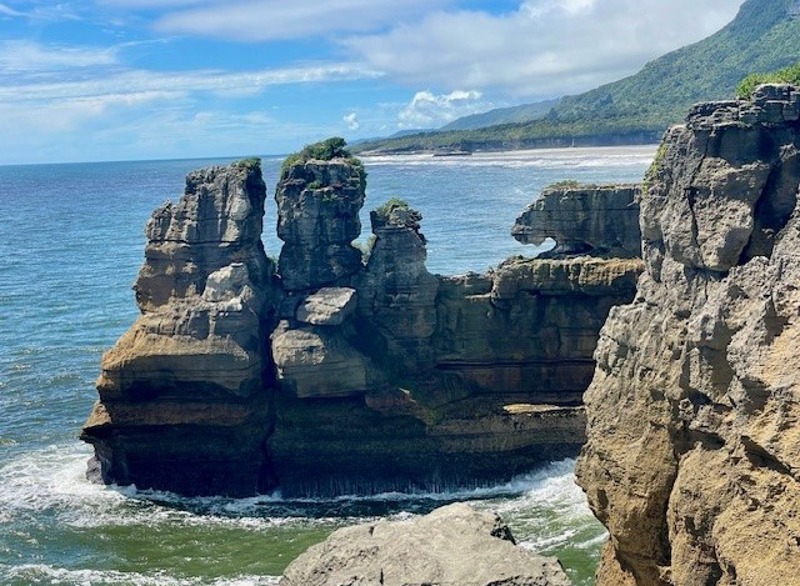

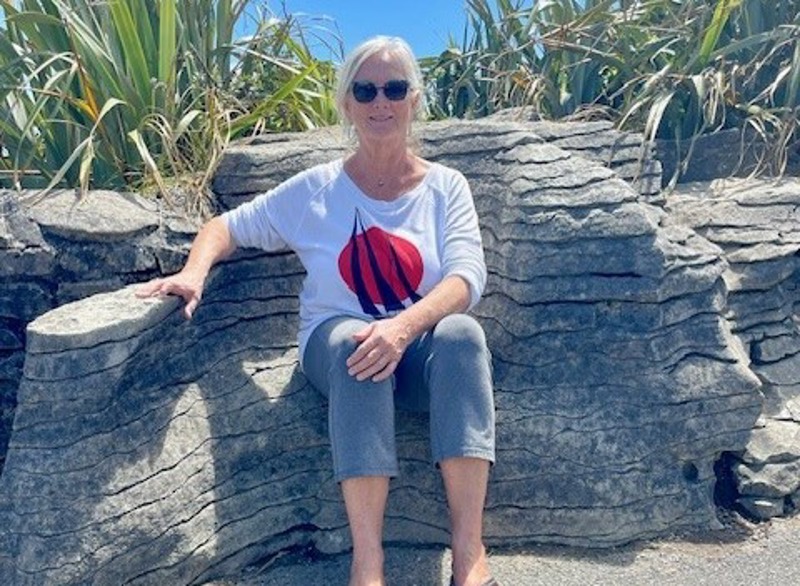
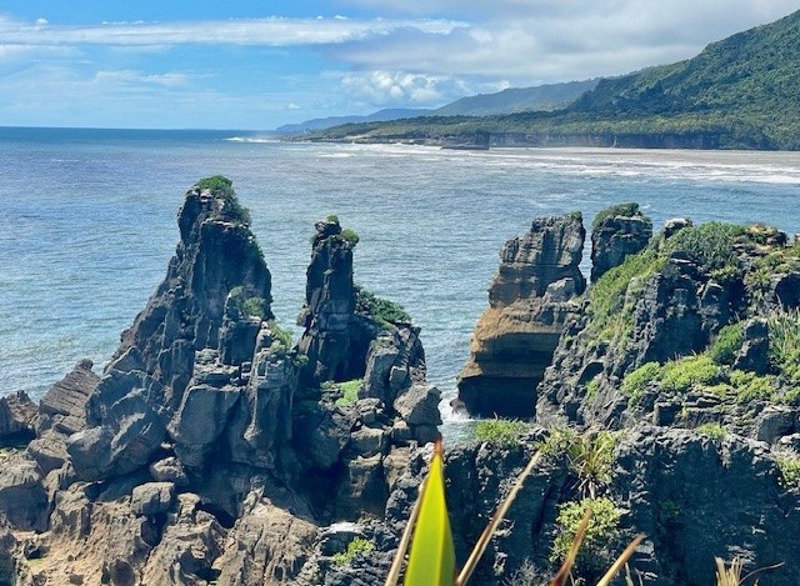
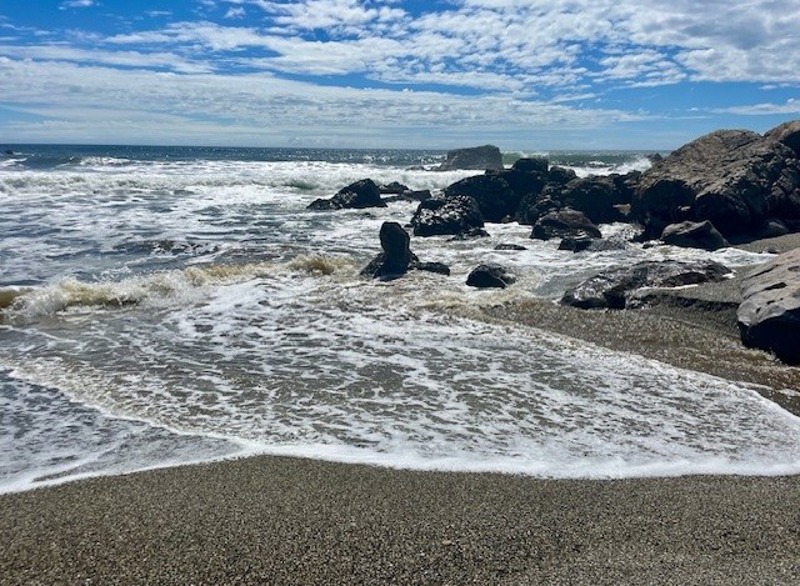
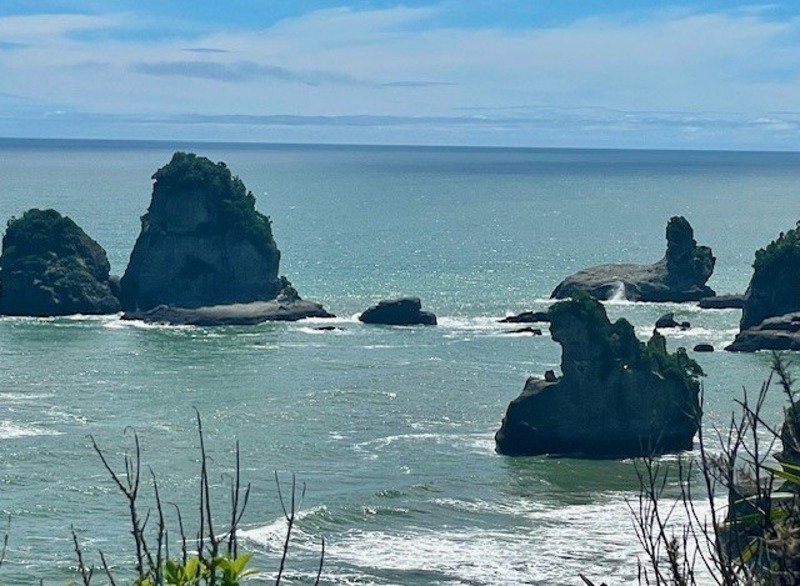
Hokitika is a cool little town with a wonderful wild beach of black sand with pebbles and lots of driftwood. Every January they have a Driftwood and Sand Festival where budding artists of all ages work side by side with professionals turning driftwood and other materials they find on the beach into sculptural pieces. Unfortunately we are here a week early!
Mother Nature, the world’s greatest artist, totally rocks it again at the Punakaiki Pancake Rocks. She has been working on this heavily eroded limestone masterpiece for over 30 million years, shaping several stacked pancake rock formations, caves, surge pools and blowholes.
The stack of pancakes at the little restaurant nearby were tempting – too bad we weren't hungry. And they probably didn’t have whipped cream for the top.
A gorgeous day driving along the Tasman Sea stopping at several beaches, Westport’s Toki Poutangata Pedestrian Bridge (to nowhere), Monteith Brewery in Greymouth, and finally stopped for the night at Carters Beach’s black sand beach.
Star light, Star bright, Sweet dreams & Good night!
XOXOXOXO
Gma & Gpa
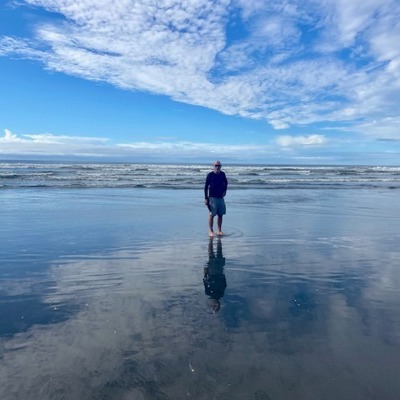
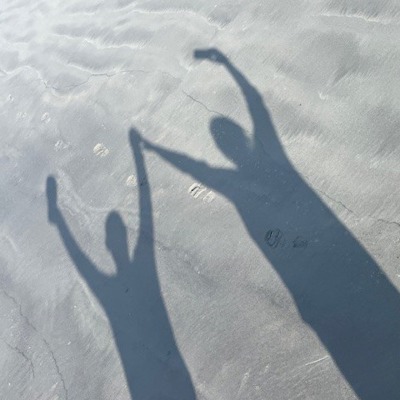
1.
We're Back!
2.
Marlborough District
3.
Kaikoura
4.
Christchurch and beyond...
5.
Steampunk & a Castle?
6.
Te Anau
7.
Milford Sound
8.
Queenstown
9.
Little Paradise
10.
Happy Birthday to Gma!
11.
Glacier Country
12.
Now Where??
13.
The Wild Side
14.
It's Just Another Day
15.
Wonderland
16.
More Places to Go...
17.
Happy Birthday to Gpa!
18.
Love It Here!
19.
Let 'er Loose!
20.
Crossing the Ditch
21.
Sydney
22.
Taronga Zoo
23.
to Bundy
24.
Coddiwomple
25.
Found It!
26.
Something New!
27.
Adjusting Our Sails
28.
Back to the Islands
29.
Maggie Island
30.
Hinchinbrook
31.
Gone fishin'
32.
Cairns
33.
Low Isles
34.
Agincourt Reef
35.
Ribbon Reefs
36.
Lizard Island
37.
Cooktown
38.
Time to Head South
39.
Out and About
40.
It's Time to Go
41.
Onward Ho!
42.
K'gari | Fraser Island
43.
Carnival of Flowers
44.
Australia Zoo
45.
Where, Oh Where Did the Metzes Go??
46.
We Went to Tassie!
47.
The End
Share your travel adventures like this!
Create your own travel blog in one step
Share with friends and family to follow your journey
Easy set up, no technical knowledge needed and unlimited storage!
© 2025 Travel Diaries. All rights reserved.